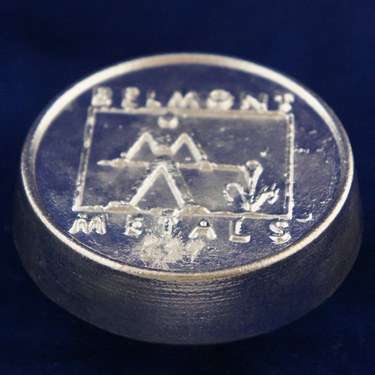Eutectic alloys and non-eutectic alloys are categories when discussing low melting alloys. Low melting alloys require lower temperature ranges to melt, anywhere from 40 degrees to 300 degrees Fahrenheit. This property allows for the alloys to be melted at lower temperatures without damaging or impacting other nearby materials or surfaces that the low melting alloy…
|
Named after its inventor, Simon Quellen Field, Field’s metal is Eutectic at 144 F, 62 C. Field’s metal is expensive due to the price of indium, which makes up over half its mass. However, as it contains neither lead nor cadmium, it is a less toxic alternative to Wood’s metal. It is used for die casting and rapid prototyping. |
|
| Forms: |
|
|---|---|
| Belmont Product Code | 2330 |
| Nominal Composition: |
|
|---|
RELATED POSTS

Applications for Indium-Containing Low Melting Alloys
Low melting alloys are commonly used throughout the manufacturing process to help create products or placed inside of products for a specific function. These alloys melt and flow at very low temperatures depending on the composition of the base metals and additive metals. A common low melting base metal may consist of bismuth at higher…

Different Properties of Low Melting Alloys
Joining metal parts together with solder, easily bending pipes to go around corners and components, and lens blocking systems all rely on the use of low melting alloys. This type of metal allows for products, parts and components to be manufactured and cast at lower temperatures. This feature is ideal when requiring lower temperatures to…

Bismuth-Based Low Melting Alloys Providing Benefits to the Art Casting Industry
Throughout history, art casting has been used to create beautiful works of art, to recreate previous works of art that may have become damaged or deteriorated due to age, or when mass-producing art pieces. The art casting method involves using wood, stone, plaster, or silicon rubber molds and some type of pliable material, such as…

Low-Melting Alloys Containing Indium: Characteristics and Applications
Often when thinking about metal alloys, we consider the strength and durability of the metal to withstand a range of loads, stresses and extreme temperatures. Yet there are a range of manufacturing applications where an alloy needs to have a low melting characteristic. A low-melting alloy, also called fusible alloy, can take a liquefied or…

Applications Using Low Melting Alloys
Low melting alloys are considered fusible alloys because they melt at temperatures below 300 degrees are often combined with other metals in order to increase certain properties. For example, Bismuth is often combined with tin and/or silver to create lead-free solders that are non-toxic. Low Melting Alloy Applications and Uses Low melting alloys can be…

Characteristics of Low Melting Alloys
Manufacturers around the globe rely on quality materials to create a range of parts, equipment and products for businesses and consumers. During the assembly process, different materials may need to be joined together for a tight seal, cast in a mold to a designed form, or bent into a new direction without collapsing. Low melting…

Liquid metal’s low melting point
Fusible alloys’ low melting point makes them useful in a wide variety of applications The melting point of aluminum is 1,220 degrees Fahrenheit. Carbon steel melts somewhere between 2,600 and 2,800 degrees Fahrenheit, and the temperature needs to rise all the way up to 6,150 degrees Fahrenheit to melt tungsten. Specialized furnaces are needed to…

The Basics of Bismuth
This white element is an essential part of many alloys Purple-Silver, crystalline Bismuth has been in use since the early days of alloying, although during those times, it was often mistaken for Lead. It’s the most naturally diamagnetic element, which means it repels both north and south, and it has one of the lowest values…

